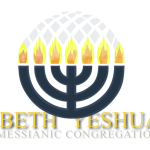Sukkot also called “Feast of Booths” is a traditional Jewish Holiday celebrated on the 29th day of the month of Tishri (late September to late October). It is the last of the Shalosh R’galim (three biblical pilgrimage festivals) when it was traditional for Jews to visit the Temple in Jerusalem.
Sukkot was agricultural in origin. “The Feast of Ingathering,” from its ceremonies and occasion of its celebration:
At the end of the year when you gather in your labors out of the field” (Ex. 23:16); After you have gathered in from your threshing-floor and your winepress” (Deut. 16:13)”.
It was a thanksgiving for the fruit harvest. Coming as it did at the completion of the harvest, Sukkot was regarded as a general thanksgiving for the bounty of nature in the year that had passed.
The word Sukkot is the plural of the Hebrew word Sukkah, meaning “Booth” or “Hut”. The Sukkah is reminiscent of the type of fragile dwellings in which the ancient Israelites dwelt during their 40 years of wandering in the desert after their Exodus from Egypt.
Simchat Torah, Rejoicing in the Law, Oct 23 – 25, 2024
Simchat Torah, Hebrew for “Rejoicing in the Law”, celebrates the completion of the annual reading of the Torah. Simchat Torah is a joyous festival, in which we affirm our view of the Torah as a tree of life and demonstrate a living example of never-ending, lifelong study. Torah scrolls are taken from the ark and carried or danced around the synagogue seven times. During the Torah service, the concluding section of Deuteronomy is read, and immediately following, the opening section of Genesis is read.
Hanukkah, the Jewish festival of rededication, also referred to as the festival of lights, spans eight days, commencing on the 25th day of the Jewish month of Kislev.
Widely recognized, Hanukkah’s prominence doesn’t stem from significant religious implications but rather its proximity to Christmas. Many non-Jews, and even assimilated Jews, perceive it as the Jewish counterpart to Christmas, adopting customs such as elaborate gift-giving and decoration. Ironically, this festival, rooted in a revolt against assimilation and the suppression of Jewish religion, has evolved into the most assimilated, secular observance on the Jewish calendar.
The narrative of Hanukkah traces back to the era of Alexander the Great. Although Alexander conquered Syria, Egypt, and Palestine, he permitted the regions under his control to maintain their religions and a degree of autonomy.
Over a century later, Antiochus IV, a successor of Alexander, exerted severe oppression on the region. His oppressive measures included placing a Hellenistic priest in the Temple, massacring Jews, forbidding the practice of the Jewish religion, and desecrating the Temple by mandating the sacrifice of pigs on the altar. Two opposition groups emerged: a nationalistic faction led by Mattathias the Hasmonean and his son Judah Maccabee, and a religious traditionalist group known as the Chasidim. Collaborating in a revolt against Seleucid Greek government oppression, they successfully restored the Temple.
According to tradition, during the rededication, minimal uncontaminated oil was available for the Temple menorah, intended to burn continuously each night. Though only sufficient for one day, it miraculously lasted for eight days—the time required to prepare a fresh oil supply. To commemorate this miracle, an eight-day festival was instituted.
Shavuot, known as the Festival of Weeks or “Pentecost,” holds a dual significance, blending historical and agricultural importance alongside Passover and Sukkot. Agriculturally, it memorializes the harvesting of the first fruits, celebrated as Hag ha-Bikkurim (the Festival of the First Fruits), during which offerings were presented at the Temple. Historically, it honors the giving of the Torah at Mount Sinai, also called Hag Matan Torateinu (the Festival of the Giving of Our Torah). Shavuot is additionally associated with the Coming of the Holy Spirit (Ruach HaKodesh) as depicted in Acts 2:1-31, signifying the birth of the Bride of Yeshua.
The period between Passover and Shavu’ot is marked by anticipation, counting the days from the second day of Passover to the eve of Shavu’ot—49 days or 7 full weeks, hence the festival’s name.
This counting underscores the profound link between Passover and Shavuot. Passover liberated us physically from bondage, while the giving of the Torah on Shavu’ot redeemed us spiritually from idolatry and immorality. This spiritual transformation was made possible by the Holy Spirit’s arrival on the apostles, empowering them to live as a Royal priesthood and a Holy nation.
As Messianic believers in Yeshua, we discern parallels between the physical Torah given on Mount Sinai—etched by the finger of G-d on stone tablets—and the “inscription” of the Torah in our hearts. This internal transformation empowers us to live as citizens of the Kingdom of Heaven on earth, adhering to the divine law.
It is noteworthy that the holiday is referred to as the time of the giving of the Torah, both Temporal and Spiritual, rather than the time of receiving. The sages emphasize that we are continually in the process of receiving the Torah, doing so daily, but it was initially given at this significant time. Therefore, it is the act of giving, not receiving, that lends this holiday its profound significance.
